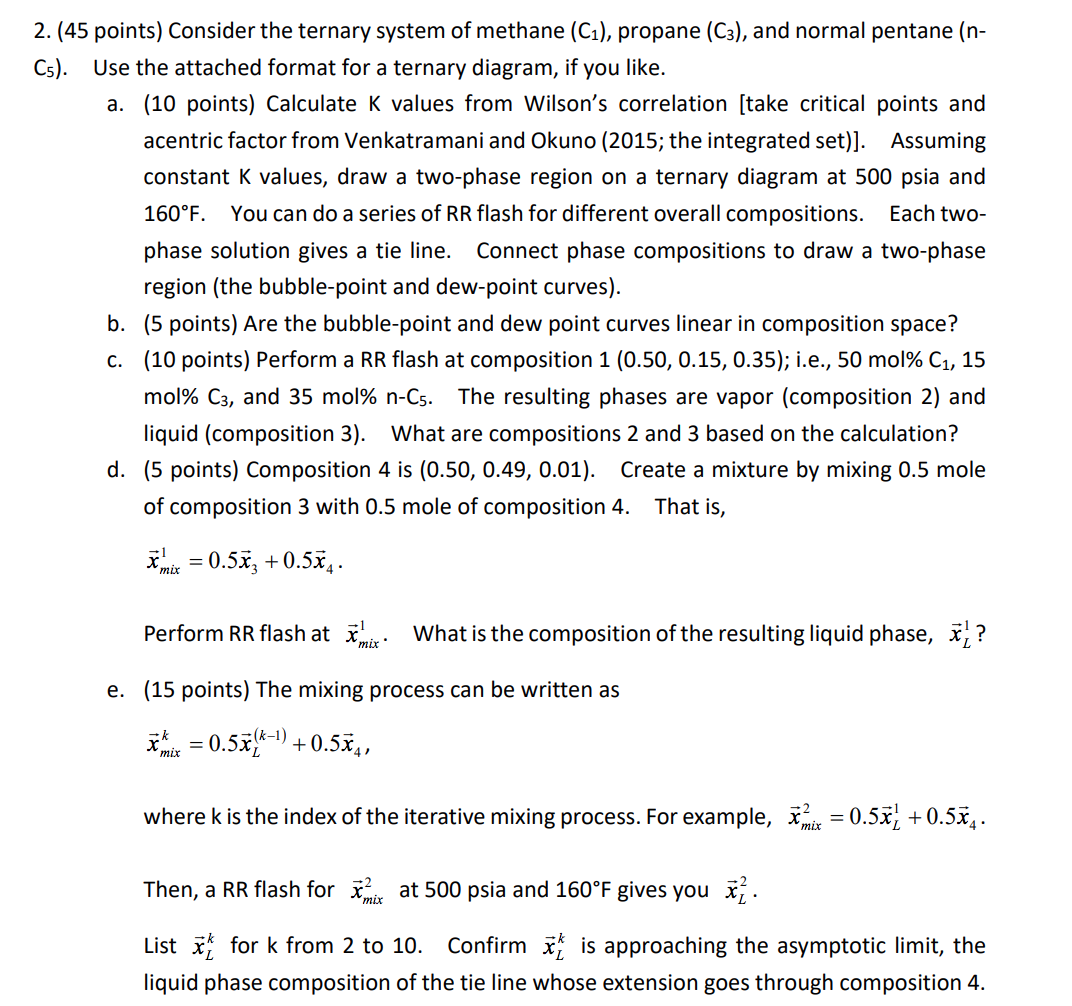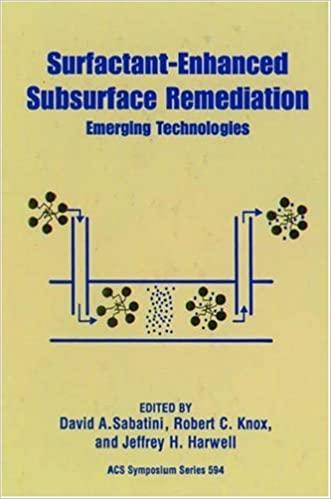
2. (45 points) Consider the ternary system of methane (C1), propane (C3), and normal pentane (n- C5). Use the attached format for a ternary diagram, if you like. a. (10 points) Calculate K values from Wilson's correlation (take critical points and acentric factor from Venkatramani and Okuno (2015; the integrated set)]. Assuming constant K values, draw a two-phase region on a ternary diagram at 500 psia and 160F. You can do a series of RR flash for different overall compositions. Each two- phase solution gives a tie line. Connect phase compositions to draw a two-phase region (the bubble-point and dew-point curves). b. (5 points) Are the bubble-point and dew point curves linear in composition space? C. (10 points) Perform a RR flash at composition 1 (0.50, 0.15, 0.35); i.e., 50 mol% C, 15 mol% C3, and 35 mol% n-C5. The resulting phases are vapor (composition 2) and liquid (composition 3). What are compositions 2 and 3 based on the calculation? d. (5 points) Composition 4 is (0.50, 0.49, 0.01). Create a mixture by mixing 0.5 mole of composition 3 with 0.5 mole of composition 4. That is, e mix = 0.5x2 +0.584. = + Perform RR flash at times What is the composition of the resulting liquid phase, #? e. (15 points) The mixing process can be written as er mit = 0.5*,*-1) +0.584, (1) where k is the index of the iterative mixing process. For example, tmir = 0.581 +0.584. Then, a RR flash for at 500 psia and 160F gives you . List for k from 2 to 10. Confirm this approaching the asymptotic limit, the liquid phase composition of the tie line whose extension goes through composition 4. 2. (45 points) Consider the ternary system of methane (C1), propane (C3), and normal pentane (n- C5). Use the attached format for a ternary diagram, if you like. a. (10 points) Calculate K values from Wilson's correlation (take critical points and acentric factor from Venkatramani and Okuno (2015; the integrated set)]. Assuming constant K values, draw a two-phase region on a ternary diagram at 500 psia and 160F. You can do a series of RR flash for different overall compositions. Each two- phase solution gives a tie line. Connect phase compositions to draw a two-phase region (the bubble-point and dew-point curves). b. (5 points) Are the bubble-point and dew point curves linear in composition space? C. (10 points) Perform a RR flash at composition 1 (0.50, 0.15, 0.35); i.e., 50 mol% C, 15 mol% C3, and 35 mol% n-C5. The resulting phases are vapor (composition 2) and liquid (composition 3). What are compositions 2 and 3 based on the calculation? d. (5 points) Composition 4 is (0.50, 0.49, 0.01). Create a mixture by mixing 0.5 mole of composition 3 with 0.5 mole of composition 4. That is, e mix = 0.5x2 +0.584. = + Perform RR flash at times What is the composition of the resulting liquid phase, #? e. (15 points) The mixing process can be written as er mit = 0.5*,*-1) +0.584, (1) where k is the index of the iterative mixing process. For example, tmir = 0.581 +0.584. Then, a RR flash for at 500 psia and 160F gives you . List for k from 2 to 10. Confirm this approaching the asymptotic limit, the liquid phase composition of the tie line whose extension goes through composition 4







